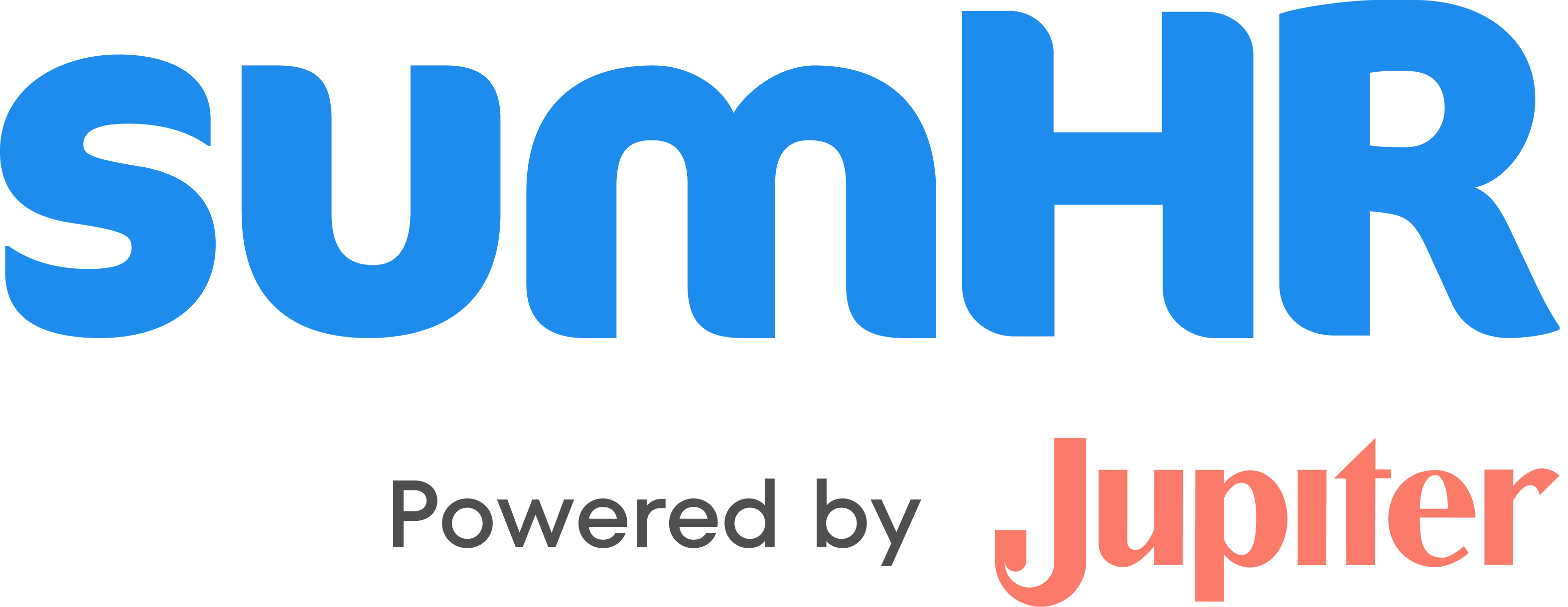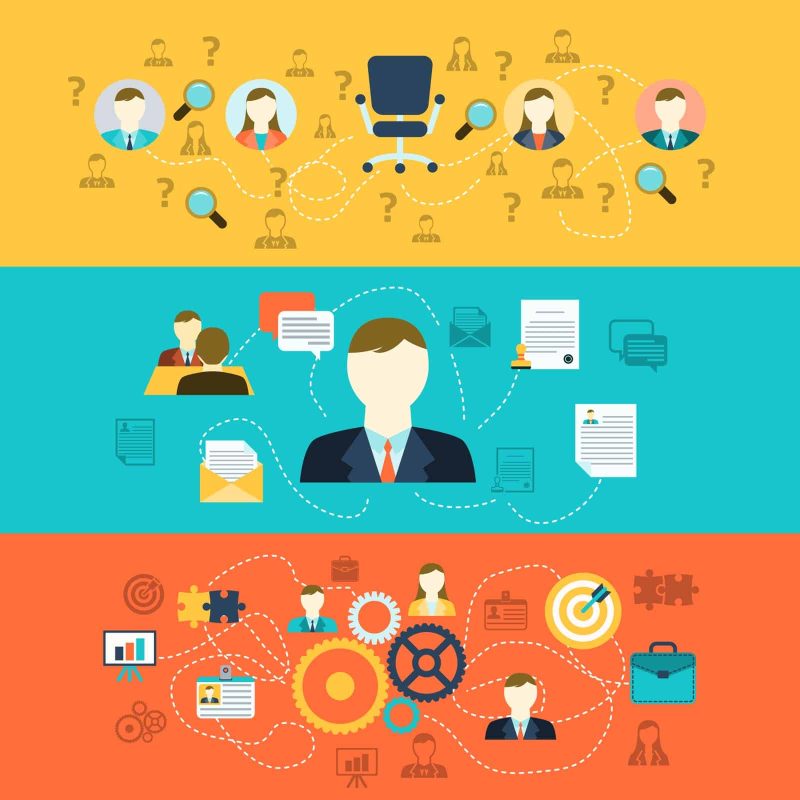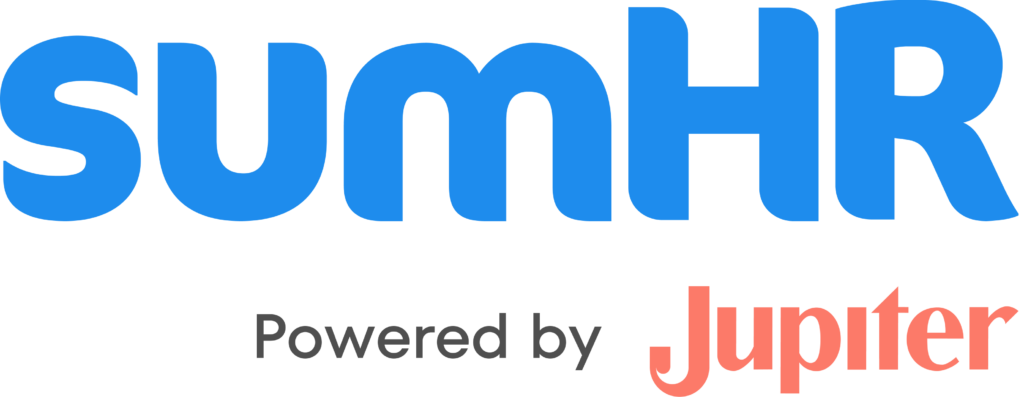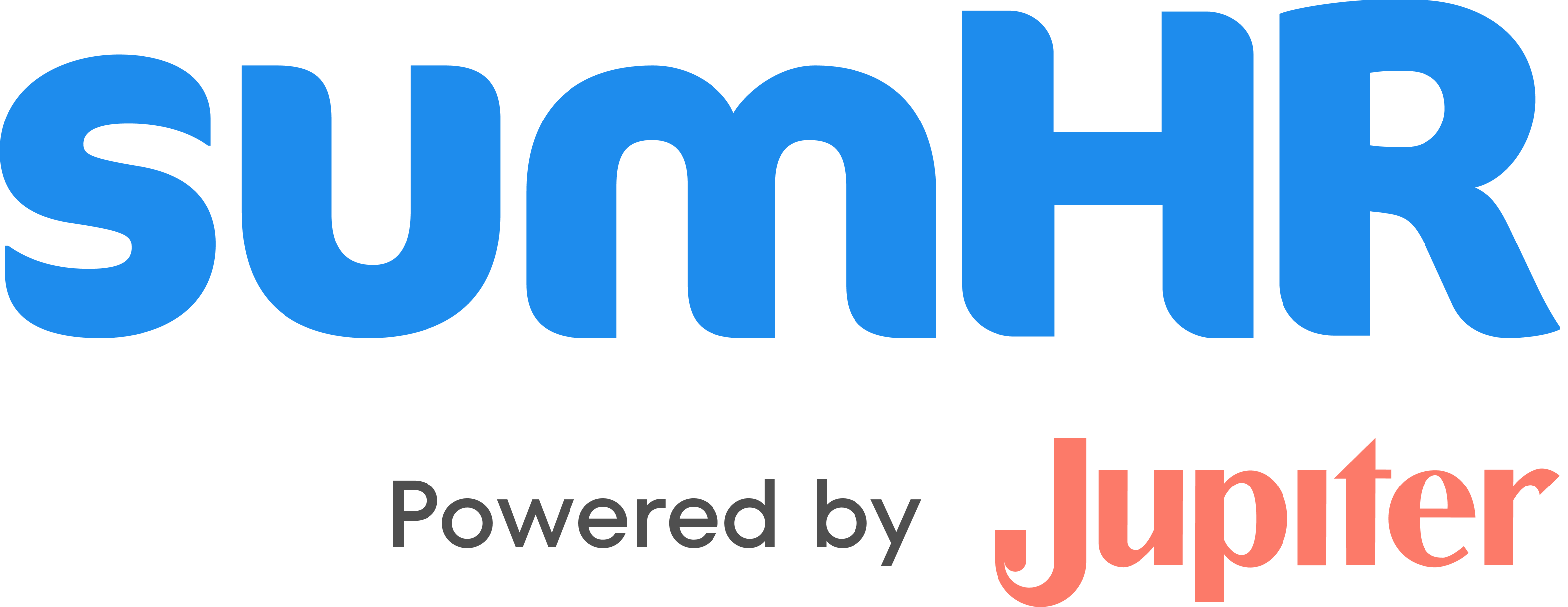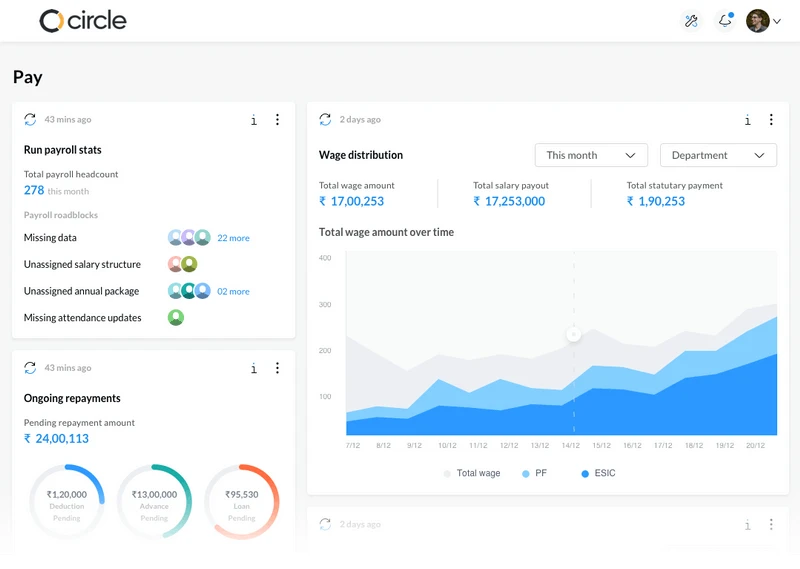Human resource management is humanely managing an organization’s personnel. The human resources approach to the workforce allows the management to consider people as valuable resources. It is the strategy through which an organization may use its force not just for the company’s advantage but also for the growth, development, and self-satisfaction of the individuals involved. Thus, human resources management is a system that focuses on human resource development on one hand and good interpersonal skill management on the other so that people may have human dignity in their jobs.
Apart from this, the human resources department has a crucial administrative role in performance management since most of the difficulties in organizational settings are human and social rather than physical, technical or economic failure. The human resource department is also responsible for taking care of the activity of employees.
Since every company is made up of human capital, obtaining their services, improving their abilities, inspiring them to a high level of performance and ensuring that they continue to keep their commitment to the organization are crucial to accomplish organizational goals. This is true independent of organization, government, business, education, health, leisure or social activity.
1. Nature of Human Resources
Human resources is a managerial activity that assists managers in recruiting, selecting, training and developing personnel for a business. It is focused on employee engagement in companies. The following aspects represent the core of human resources:
- Human resources include the implementation of management functions and concepts: The functions and concepts are employed for acquiring, developing, sustaining and giving pay to personnel in the organization.
- Decisions relating to employees must be incorporated: Decisions on various elements of workers must be compatible with other human resource (HR) decisions.
- Decisions made impact the performance of an organization: The effectiveness of a company will result in the enhancement of services to clients in the form of high-quality items delivered at affordable pricing.
Human resources functions are not restricted to business establishments. Instead, they place a comprehensive approach that is applicable to non-business organizations such as education, health care, leisure and many more firms.
Human Resources refers to a collection of programs, functions, and employment laws created and carried out to optimize both employee and corporate performance.
2. Goals of Human Resources
The fundamental purpose of Human Resources (HR) is to assure the availability of skilled and willing workers for a firm. Beyond this, there are other aims too.
2.1. Personal goals
To support employees in reaching their objectives, at least in so far as these goals increase the individual’s contribution to the firm. The personal goals of workers must be preserved, kept and driven.
2.2. Functional goals
To keep the employee relations adequate, the organization should satisfy the demands. Resources are squandered when Human Resources is either more or less sophisticated to fit the businesses expectations.
2.3. Organizational goals
To appreciate the function of employee productivity in bringing about organizational success, Human Resources is not an end in itself but merely a way to aid the organization in meeting its primary objectives.
2.4. Societal goals
To be morally & socially accountable for the requirements and difficulties of society while minimizing the negative effect of such expectations upon the company to utilize their office policies for society’s advantages in ethical methods may lead to limitation.
2.5. Various other goals
- Accomplish the core organizational goals by building and using a competent and motivated workforce.
- To build and sustain employee records and desired working relationships among all the organization members.
- Develop coordination among people and groups inside the professional development of the organization to ensure the organization’s integration.
- To establish facilities and opportunities for individual or group development to align it with the workplace policies.
- To acquire an efficient use of human resources in attaining administrative tasks.
- To recognize and meet individual and collective requirements by providing appropriate and equal salaries, incentives, employee benefits, and social security and measures for demanding work, prestige, recognition, security, status.
- To maintain strong personnel morale and human connections by preserving and developing the varied circumstances and amenities.
- To consistently enhance and respect human assets by delivering training and development programs.
- To examine and contribute to minimizing socio-economic problems such as unemployment, underemployment, inequities in the distribution of income and wealth and enhancing society’s welfare by offering job opportunities to women and underprivileged parts of the community.
- To give a chance for expressiveness and talent management.
- To give fair, acceptable and efficient business management.
- To offer facilities and conditions of work and develop a suitable environment for preserving employment stability.
- To generate and use a competent and motivated labor force.
- Establish & maintain solid personnel management.
- Create facilities to obtain optimal usage Identify & meet individual and employee expectations.
- Maintain good employee morale training and development opportunities for expression.
- Provide fair, good and efficient leadership Facilities and conditions.
3. Key role of Human Resources
The scope of human resources is enormous. All critical actions in a person’s working life — from the moment of their admission into an organization until they exit the company- fall under Human Resources’ supervision.
The essential human resources management activities include HR planning, job analysis, job design, employee hiring, employee and executive compensation, employee motivation, employee maintenance, industrial relations and prospects of Human Resources.
3.1. Human resource planning
HR Planning aims to guarantee that the company has the right sorts of employees at the right time at the correct location. HR Planning provides long-term and short-term plans to satisfy the workforce demand. It develops human resources inventory intending to analyze existing and future needs, availability and any shortfalls in human resources. Moreover, HR Planning anticipates demand and supplies and discovers sources of selection.
3.2. Design of organization and job
This is the duty of establishing the organization structure, authority, connection and responsibilities. This will also involve the specification of job contents for each role in the company. Some elements include “job description” and “job specification”. Job specification outlines the traits of individuals who will be the best fit for each job summarized by job description.
3.3. Selection and staffing
This is the process of recruiting and selecting workers. It entails aligning employees and their expectations with the job criteria and career path accessible inside the firm.
3.4. Training and development
This entails an organized endeavor to figure out the training requirements of employees to meet the knowledge and skill required not only to do present work but also to fulfill the company’s future demands.
3.5. Organizational development
This is an essential feature whereby “Synergetic impact” is formed in an organization, i.e. healthy interpersonal and inter-group connection.
3.6. Compensation and benefits
This is the field of wages and salaries administration, where wages and bonuses are determined scientifically to fulfill fairness and equitable requirements. In addition, labor welfare measures are engaged, including perks and services.
3.7. Worker assistance
Each employee is distinct in attitude, mentality, expectation and temperament. By and large, each one of them has issues daily. Some are personal, and some are formal. In their scenario, they stay anxious. Such anxieties must be eliminated to make them more productive and cheerful.
3.8. Union-labor relationships
Healthy industrial and labor relations are crucial for promoting peace and production in an organization. This is one of the areas of human resources.
3.9. Staff data and knowledge systems
Knowledge of behavioral science and industrial psychology gives more profound insight into the employee’s expectations, ambitions, and conduct. The advancement of product and manufacturing processes technology has generated a working environment that is significantly different from the past.
4. Critical tasks and aspects of Human Resources
The function of human resources is to plan, implement and execute policies and programs aimed to make the best use of an organization’s human resources. It is that portion of management concerned with the people at work and their connection inside organizations.
4.1. Managerial role of HR
Significant developments have occurred in the executive role of HR throughout recent years. The administrative function of HR management has been primarily geared to administration and recordkeeping, including crucial legal documentation and policy execution. Two main developments influencing the evolution of the administrative position are greater use of technology and outsourcing.
Technology has been extensively employed to increase the administrative efficiency of HR and the responsiveness of HR to workers and managers. Technology is used in most HR processes, from job applications and employee benefits enrollments to e-learning employing internet-based resources. Moreover, HR services are being offered online or done on the Internet utilizing Web-based technologies.
4.2. Functional and staff support role for HR
Employee advocacy helps to provide fair and equal treatment for workers regardless of personal history or circumstances. HR typically has been considered as the “employee advocate” in corporations. They operate as the voice for employee complaints and spend extensive time on HR “crisis management,” dealing with employee problems that are both work-related and non-work-related.
The operational function demands HR professionals to cooperate with different departmental and operating managers and supervisors to develop and execute essential programs and company policies. Active actions are tactical. Compliance with equal employment opportunity and other regulations are guaranteed, job application forms are handled, existing positions are filled via interviews, supervisors are trained, safety concerns are rectified, and salary and benefit inquiries are answered.
4.3. Strategic role of HR
The administrative position usually has been one of the primary duties of HR. A more profound revolution in HR is required so that much less HR time and fewer HR staff are spent merely on administrative functions.
Differences between the operational and strategic responsibilities arise in various HR sectors. The strategic HR job indicates that HR practitioners are proactive in addressing business realities and concentrating on future business demands, such as strategic planning, compensation schemes, the performance of HR and monitoring its outcomes.
However, in certain businesses, HR frequently does not play a vital part in creating the strategies for the company as a whole; instead, it just executes them out via HR operations.
5. Functions of Human Resources
Human Resources management has a vital role in preparing firms to address the demands of a growing and more competitive market. An increase in personnel numbers, contractual diversity, and changes in demographic profile push the HR managers to rearrange the function and value of human resources management.
All the functions of HRNI are associated with the critical goals of Human Resources. The roles are responsive to current personnel demands but may be proactive in altering corporate plans. For example, personal aims are intended to be accomplished via functions like pay, assessment etc.
5.1. Workforce
The purpose of staffing is to offer a sufficient supply of skilled workers to fill roles in a company. Job analysis, recruiting and selection are the primary responsibilities of under-staffing.
Workers’ work design and job analysis created the basis for staffing by examining what various individuals do in their occupations and how they are influenced. Work analysis identifies the nature of a job. It outlines the human needs such as knowledge, skills, and experience required to do the job. The outcome of the job analysis is the job description. A Job description specifies the job obligations and activities of employees.
Through HR planning, managers predict the future supply of and demand for personnel and the nature of workforce difficulties, including the retention of employees. So HRP precedes the actual selection of personnel for the organization. These variables are utilized while recruiting candidates for job postings. The selection process is focused on picking qualified candidates to fill specific roles. In the selection function, the most qualified candidates are selected for employment from among the applicants based on the degree to which their talents and skills match the position.
5.2. Cumulative incentives
Compensation management is the strategy for establishing how much people should be paid for completing various duties. Compensation in the form of money, bonuses and perks are the rewards offered to the workers for executing critical tasks. Compensation impacts staffing, and in staffing, individuals are often drawn to businesses giving a better degree of compensation in return for the job accomplished.
To remain competitive, businesses build and modify their entire compensation systems and may utilize variable pay programs such as incentive awards, promotion from within the team, recognition incentives, balancing team and individual prizes etc. This traditional HR role employs incentives to inspire workers to meet an organization’s productivity, creativity, and profitability objectives.
Pay is also connected to employee development in compensation; it offers a key incentive for inspiring people to greater levels of job performance in the firm.
Benefits are another kind of remuneration to workers other than direct money for the task accomplished. Benefits include legally necessary things as per employment laws and those supplied at the employer’s discretion. Benefits are primarily relevant to employee maintenance since they cater to several fundamental employee requirements.
5.3. Employment and labor relations
The interaction between managers and their staff must be managed legally and adequately. Employer and employee rights must be addressed. It is crucial to design, discuss and update HR policies and procedures so that managers and workers alike know what is expected. In other companies, union/management interactions must be handled as well.
The phrase labor relation refers to the engagement with workers represented by a trade union. Unions are an organization of workers who join together to acquire a more significant say in decisions affecting salaries, benefits, working conditions and other elements of employment. Concerning labor relations, the critical duty of HR employees is negotiating with the unions over wages service conditions and resolving disputes and complaints.
6. Functions of Human Resource Manager
A human resources manager performs a significant function in a contemporary firm. He fulfills several strategic tasks at different levels in the company. Certain human resources management activities include roles of conscience, of a therapist, a mediator, a corporate representative, a problem solver and a change agent.
- The conscience function is that of a humanitarian who reminds the management of its values and commitments to its workers.
- Employees unsatisfied with the existing employment seek the HR manager for counseling.
- The human resources professionals counsel and advise the workers and make solutions to solve/overcome the challenges. In addition, workers confronting different difficulties, including marital: health, children’s education, mental, physical and career, also consult the HR managers.
- As a mediator, the HR manager fulfils the function of a peace-maker. He handles the issues between workers and the management. He functions as a liaison and communication connection between both of them.
- He is a regular spokesperson for or representative of the firm.
- He operates as a problem solver about the challenges that affect human resources management and general long term organizational planning.
- He operates as a change agent and makes adjustments in several current projects.
- The HR manager must work as an enabler and change agent concerning HR areas. He should be familiar with different disciplines like planning, future technologies, cultural anthropology, psychology and group dynamics as organizational adaptability, survivability, and advancement are dependent on human resources development.
So, the HR manager should operate as a consultant of organizational growth by giving the required knowledge and infrastructure to the line managers. Thus, HR managers’ work is primarily focused on delivering information and offering recommendations to the decision-makers than making choices.
The HR department has staff contact with other departments/managers in the whole organization. The personnel department is responsible for advising management from the Managing Director to the lowest line supervisor in all aspects relevant to human resource management and industrial relations. The HR department is also responsible for the hiring process, employee training and development. It reflects the management in many of the connections that influence the business. It is also accountable for expressing diverse employees’ grievances to the administration.
7. Final Thoughts
Today’s human resources managers must understand the workings of the business and be able to comfortably speak the language of business leaders to have a measured and proven impact on business objectives. Also, getting and maintaining employees is crucial to the success of any organization, whether corporate or non-profit, public or private.
8. FAQs
8.1. How do you market yourself in the human resources department?
Obtaining a human resources degree is the first step in branding oneself as a human resources professional. A bachelor’s degree (typically in human resources) is required at the very least, and a master’s degree in human resources or related subjects is always a good idea if someone wants to develop quickly.
8.2. How can human resources influence corporate culture?
The significance of a healthy corporate culture cannot be emphasized. HR contributes to creating such a culture by ensuring that every person and department in leadership knows and appreciates every individual inside the organization. At the end of the day, when human resources and leaders collaborate to create an atmosphere in which people feel valued and appreciated, productivity and job satisfaction may skyrocket — and when that occurs, revenue can soar.
8.3. How open are human resources to automation?
Positions that need sophisticated social contact, in general, are less likely to be replaced by technology shortly. HR professions are unlikely to be replaced since they demand this skill set. According to MSN, human resource managers are one of the positions that are least likely to be replaced by automation in the future. Jobs involving the supervision of others are likewise less likely to be mechanized in the future. HR occupations are expected to be replaced by computers with other subjective, medical, and creative vocations such as authors, attorneys, and dental experts.
8.4. When can HR functions be automated?
Payroll and benefits administration has the most potential for automation in the coming years. Artificial intelligence systems will most likely have the minor issue of properly disseminating them. This will save HR personnel time and enable them to concentrate on what matters most in their careers – interacting with employees.
When it comes to sifting through applications, applicant tracking systems already handle a lot of the hard work. However, they still need people to complete the recruiting process from there. Time-sheets, time off requests, and expense claims are some of the other duties that may be automated.
8.5. What exactly is on-boarding?
On-boarding is a term used in business and human resources to describe orienting new workers in a way that benefits overall retention. It goes above and beyond what we’ve come to call new employee orientation. This approach focuses on assisting workers in quickly becoming accustomed to their new workplace and getting them on board in terms of business culture, job function comprehension, and general comfort level.
Another goal of on-boarding is to empower recruits by providing a forum for them to share their opinions about their responsibilities in the firm. Communication is a critical element of on-boarding, and workers who felt their concerns were acknowledged regularly reported higher levels of job satisfaction.
